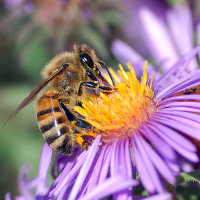Saucer Magnolia (Magnolia ×soulangeana Soul.-Bod.)
Also classified as Magnolia ×soulangiana (Alternate Spelling).
↑Summary
An artificial hybrid of Magnolia denudata and Magnolia liliiflora, neither of which occur in the wild in North America.
↑Range - Expand
| Legend | Color |
| Introduced or Not Present | |
| Introduced |
This map is based on our research. We have checked its accuracy to Level 3 ecoregions. Although this plant occurs somewhere in each of these regions, it may only occur in a small part of some or all of them.
Both parent species of this hybrid are native to China; it is widely planted in landscaping and rarely has established in the wild as escapes.
↑Habitat
We found minimal information on this species habitat preferences in the wild; because it is an artificial hybrid, it does not have any natural habitat. It seems to do best on sites with slightly acidic soil high in organic matter, consistently moist but well-drained. On these sites it will usually be overtopped and shaded out by other trees.
It is intolerant of alkaline soil and drought, but seems to tolerate a wide range of temperature conditions as well as exposure to wind.
↑Uses
This species is widely grown in landscaping as an ornamental plant. It is valued for its showy flowers and relatively small maximum size. It is also valued for not tending to produce seedlings, not being particularly aggressive at competing with other plants, and tending to be easy to garden under. These same features tend to make it have low risk of becoming invasive.
However, we caution that some cultivars, particularly "Hongyun", are not only fertile but self-compatible, and thus able to produce viable seed from a single tree. We warn against planting such cultivars in North America as they might lead this species to become invasive.
↑Links & External Resources
• Magnolia X soulangiana | Biota of North America Project (BONAP) (About This Site)
• Magnolia × soulangeana Soul.-Bod. | Plants of the World Online (POWO) (About This Site)


